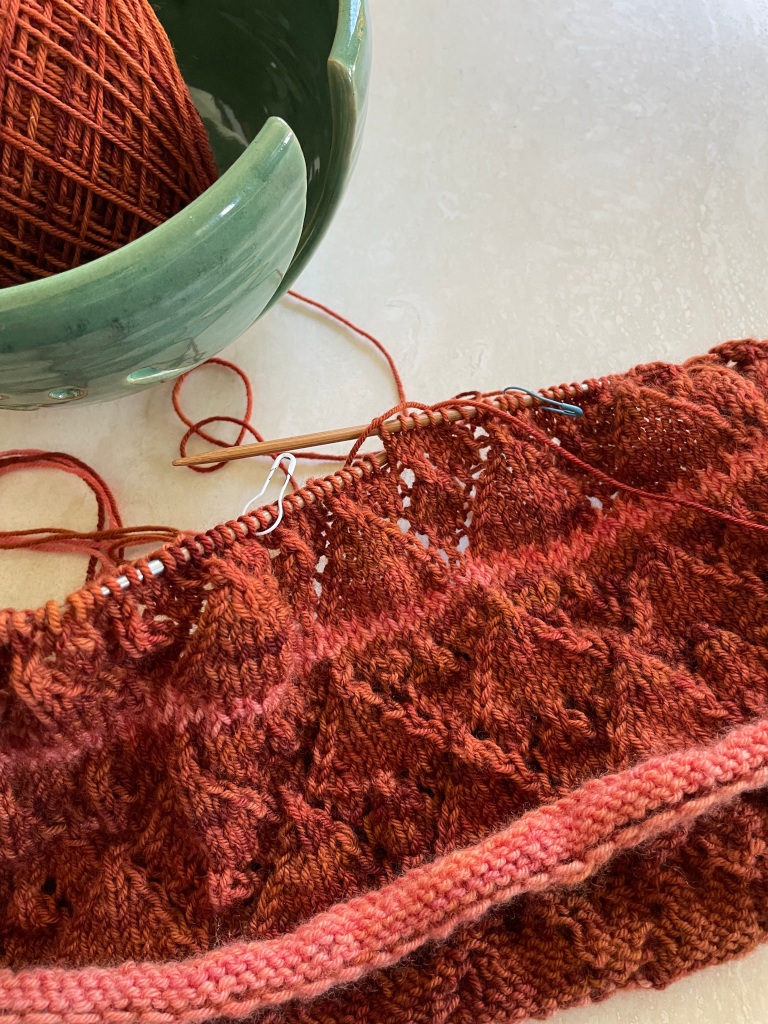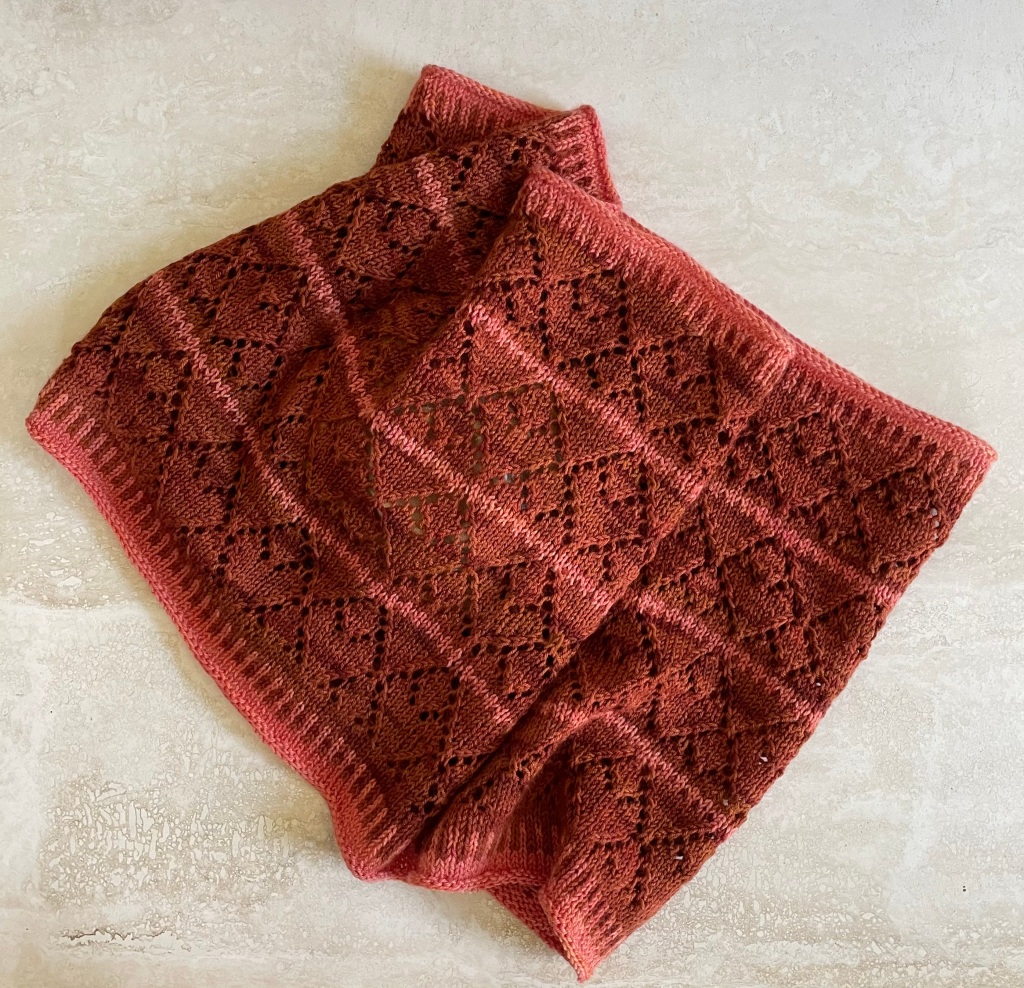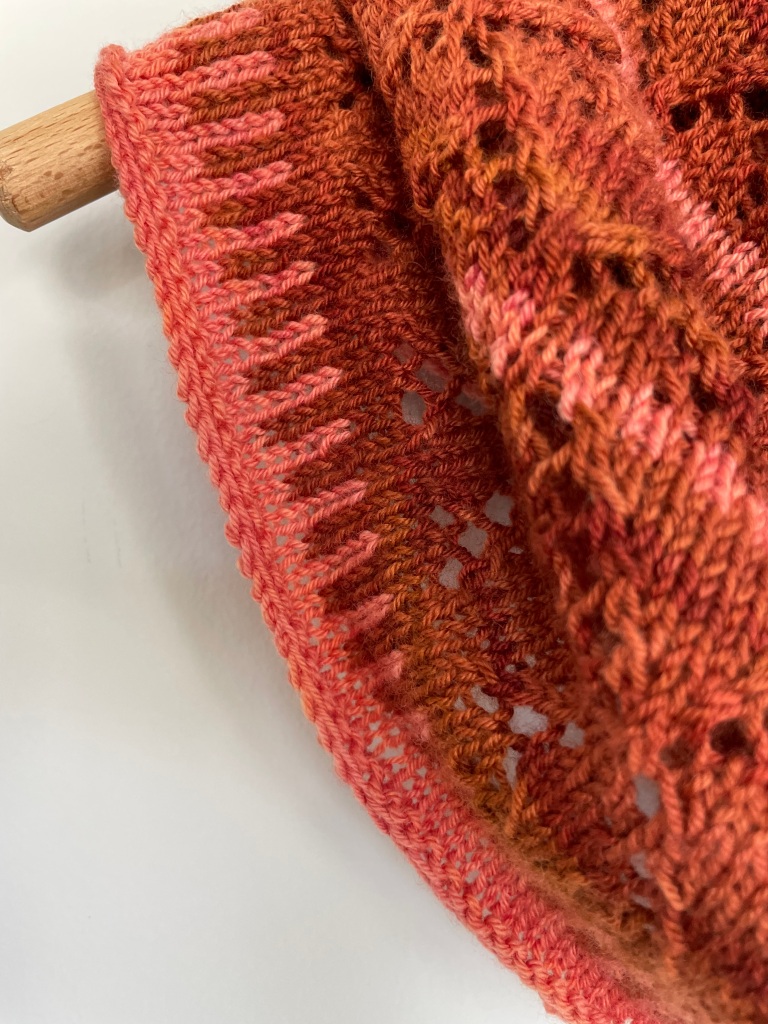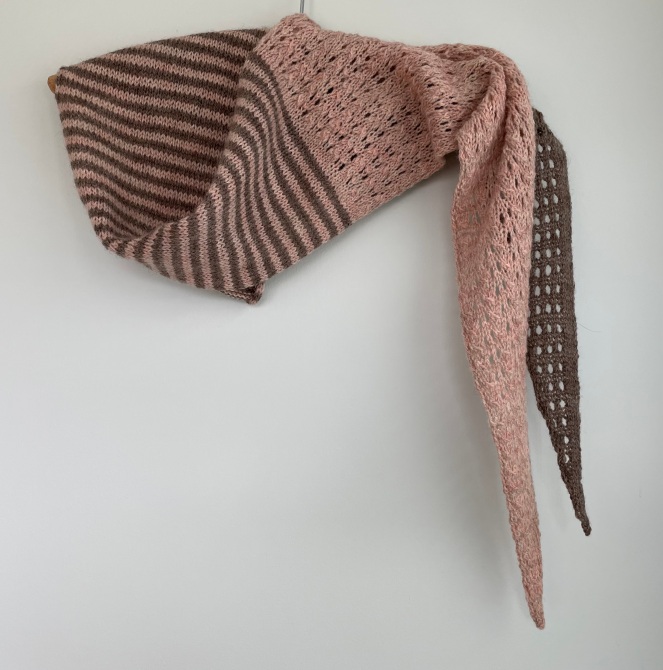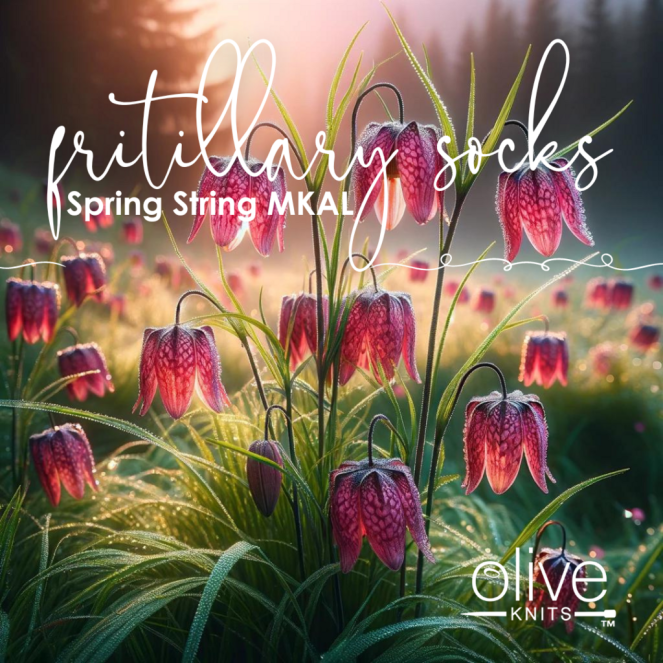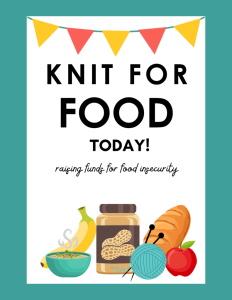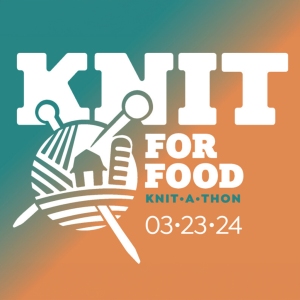
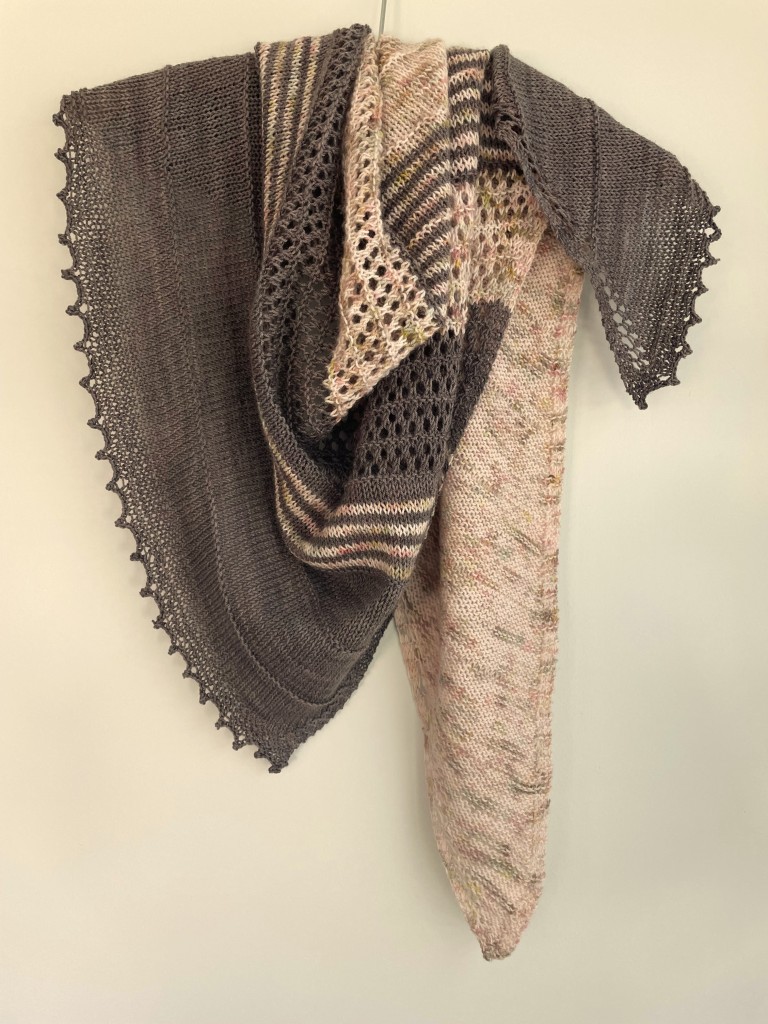
Just off my needles is Christina Campbell’s International Peace Park Shawl. Her inspiration for this simple asymmetrical shawl knit in two colors, came from Waterton-Glacier International Peace Park, the world’s first international park and a UNESCO World Heritage Site. The design begins and ends with solid segments representing the two bordering countries, color shifting stripes portray the mountain ridges, and the delicate lace segments depict the fragile nature of peace.
My knitting journal usually documents December projects designed by Christina when I have joined 100s of other knitters participating in her annual Project Peace knit-alongs (KAL). The delicate hand-dyed merino fingering skeins from last June’s Hand Dyed Happy Yarn Club are reminiscent of craggy peaks after snowmelt and spring flowers dotting high mountain meadows. The pattern sat in my queue while I waited for that just right combo of yarns since, after three visits, Glacier National Park remains among my favorite natural places with these fond memories…
- A mid-summer visit with nieces and nephews when thirteen of us hiked a glacier trail. The sun sparkling so brightly off the snowpack there were sunburned calves, despite a slathering of sunscreen.
- When, despite a sunny June day, we could only venture as far as Lake McDonald Lodge as heavy, late season snowfalls blocked Going-to-the Sun Road.
- And the thwarted plans to visit Glacier’s Canadian counterpart, Waterton Lakes National Park of Canada, due to lack of proper documentation. We had incorrectly assumed drivers’ licenses were sufficient IDs and we learned (too late) that without our passports, US customs would not allow reentry. Instead, we simply enjoyed rustic Rocky Mountain scenery on our side of the border.
Happy knitting on happy trails!


